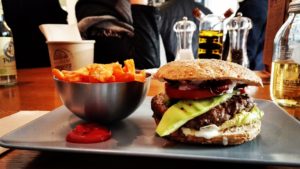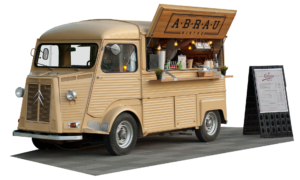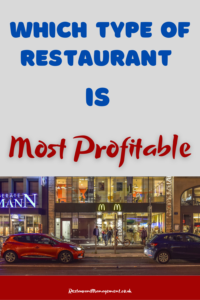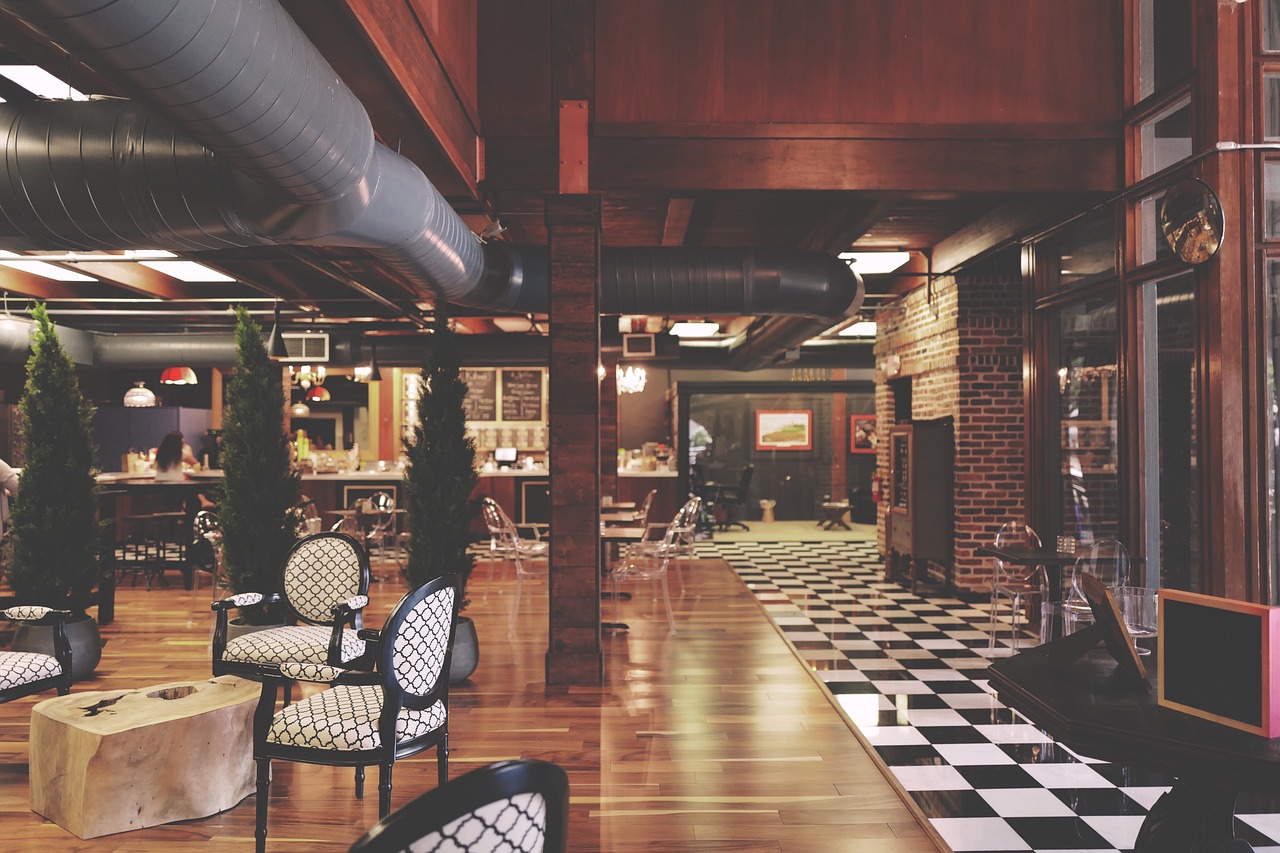First Published: 4 May 2023
Most Profitable Restaurant Types
The UK’s restaurant industry is showing strong signs of recovery, and understanding the most profitable restaurant types has never been more critical. With the market expected to surpass £110 billion by 2025 (Statista), operators face new challenges post-pandemic. With tighter margins, rising labour costs due to the National Living Wage, and growing competition from dark kitchens and delivery apps, aspiring restaurateurs must make smart, data-led decisions.
Profitability isn’t just about how much you sell — it’s about your operating model, food cost efficiency, rent structure, and repeat customer behaviour. In this guide, we’ll explore the 10 most profitable types of restaurants in the UK for 2025, based on real industry trends, consumer behaviour, and business viability. Whether you’re in London, Manchester, Birmingham or a rural town, these insights will help you pick a format that has staying power and profits.
10 Most Profitable Restaurant Types In The UK
Starting a restaurant business is a rewarding investment, but you must determine which restaurant style is most profitable. There are various sorts of restaurants, each with its own set of qualities and economic criteria. Fast food restaurants, casual dining restaurants, fine dining restaurants, ethnic restaurants, buffet restaurants, food trucks, cafés and coffee shops, bakeries and pastry shops, pizzerias, and sports bars are examples of this type of establishment. By analysing the profitability of these different types of restaurants, you can make an informed decision for your restaurant business.

1. Fast Food Takeaways (e.g., Chicken Shops, Kebabs, Fish & Chips)
In the UK, fast food takeaways remain a highly profitable business model due to low labour requirements, high customer turnover, and consistent demand. British favourites like fish and chips, chicken shops, and kebab houses thrive in urban and suburban areas, especially near transport hubs, schools, and nightlife spots.
With average net margins of 8–12%, these businesses benefit from low-cost ingredients (e.g., potatoes, flour, frozen poultry) and simplified menus. Many operate with 2–4 staff, minimising overhead. According to the Food Standards Agency and Companies House data, the typical local takeaway earns £150,000–£300,000 annually, depending on location and delivery partnerships.
Integrating apps like Deliveroo, Eat, and Uber Eats is key. While these platforms take a commission, they can double your order volume during peak hours. Fast food scales well — you can replicate success across multiple neighbourhoods with consistent branding and bulk supplier deals.
However, competition is fierce, and branding matters. Eye-catching shopfronts, reliable service, and digital presence (Google reviews, Instagram) separate high earners from the average.
2. Coffee Shops & Cafés
Coffee shops are among the most profitable small-format businesses in the UK, with gross margins on drinks as high as 80%–90%. A cup of coffee that costs £0.30 to make is sold for £2.50–£4.50, leaving ample room for profit, especially when paired with pastries or brunch menus.
Cafés are popular in commuter towns and city centres, and cafés have strong morning and afternoon footfall. Brands like Costa, Pret A Manger, and independent cafés in Shoreditch or Glasgow’s West End capitalise on a culture of takeaway flat whites, sit-in freelancers, and student study sessions.
According to Allegra Group’s UK Coffee Report, Britons drink over 98 million cups of coffee daily. Even a modest independent café can generate £200,000–£350,000 in yearly revenue, with strong profit margins if labour and rent are kept low.
The key to profitability lies in:
- Streamlined menus with high-margin drinks
- Loyalty cards or app-based rewards
- Seasonal specials (e.g. pumpkin spice, Christmas blends)
Cafés that embrace plant-based milk options, breakfast deals, and local partnerships tend to outperform. Seating, ambience, and Wi-Fi also influence dwell time, which increases upsell opportunities.

3. Pizza Restaurants (Dine-in, Takeaway or Delivery)
Pizzerias offer one of the highest profit margins in the UK food sector, especially for independent and franchise takeaway models. A standard Margherita can be made for under £1.00 and sold at £8–£12 — that’s a markup of over 1,000%.
Pizza is incredibly versatile: you can operate a dine-in pizzeria, takeaway shop, or ghost kitchen. UK consumer demand remains strong, with pizza chains like Domino’s and Papa John’s seeing annual revenues in the billions. But independent operators also thrive, especially with wood-fired, Neapolitan-style options, gluten-free bases, or vegan toppings.
Startup costs for a pizza takeaway can be as low as £40,000–£100,000, and many locations break even within the first 12 months if demand is solid. Pizza’s delivery-friendliness makes it ideal for Uber Eats and Deliveroo, which often dominate late-night orders.
Profit boosters include:
- Selling drinks and desserts alongside pizzas
- Family bundles and promotions
- Lunch deals and slice-only offerings for office crowds
Overall, a well-run pizzeria can see 12–15% net profits, outpacing many other formats.
Here’s The Most Profitable Restaurant Model In The UK Right Now
4. Food Trucks & Street Food Vans
Street food has exploded in the UK since the mid-2010s, with festivals, markets, and pop-ups offering a low-barrier entry point into the food business. Food trucks have startup costs of £15,000–£50,000, significantly lower than a traditional premises, and can reach break-even quickly.
Successful trucks in London’s KERB markets, Boxpark, or Manchester’s Hatch can pull in £1,000–£3,000 per day. Popular concepts include:
- Gourmet burgers and loaded fries
- Vietnamese banh mi
- Mexican tacos
- Vegan bowls
Margins are high due to focused menus, low staff needs, and mobility. During high-footfall hours, you can chase foot traffic or rent a fixed pitch. Booking private events or festivals (e.g., weddings, street fairs) adds reliable income streams.
The downsides are weather dependency, parking permits, and logistical issues. However, many operators scale into bricks-and-mortar locations once brand recognition is built.

5. Casual Dining Restaurants (e.g., Gastropubs, Brasseries)
The UK’s casual dining sector has stabilised post-pandemic, particularly for gastropubs, bistros, and modern British eateries that offer value-driven meals in a sit-down format. Brands like Bill’s, The Ivy Collection, and independent pubs with quality menus thrive by combining strong branding, wine/beer upsells, and comfort food.
Margins range from 6% to 10%, with average bills from £18 to £35 per person. Alcohol sales are crucial—wine, cocktails, and beer can carry 70–80% profit margins. Weekday lunch offers and early-bird specials help attract consistent trade.
These restaurants require more staff and larger premises (startup costs: £150,000+), but their potential for recurring bookings, private parties, and strong footfall can justify the overhead. Proximity to business districts or residential areas with good parking is vital.
Unlocking Success: Launching Your Fast-Casual Restaurant In The UK
6. Fine Dining Restaurants
Fine dining remains profitable — but only at the top end. Michelin-starred and high-end restaurants like Core by Clare Smyth, The Ledbury, or Restaurant Gordon Ramsay charge £100–£300 per head and can earn impressive margins (10%–15%), despite costly ingredients and staff.
But the model is risky. High build-out costs, premium rent (often central London or Edinburgh), and the pressure of critical acclaim make this format suitable for experienced restaurateurs or celebrity chefs.
Success depends on:
- PR and Michelin or AA Rosette recognition
- Booking exclusivity and long waitlists
- Corporate and affluent clientele
Unless you have the brand, chef talent, and investment, this may not be the best path for new entrants in 2025.

7. Ethnic Restaurants (e.g., Indian, Chinese, Turkish, Thai)
Ethnic food is a British staple. From curry houses to Chinese takeaways, these restaurants benefit from strong cultural demand and family-run models with lean operations.
Mintel projects that the UK ethnic food market, with margins of 7–10%, will surpass £6 billion by 2025. Many successful establishments are intergenerational, built on community reputation and affordable pricing.
Success factors include:
- Authentic menus (with Western-friendly options)
- Efficient kitchen systems
- Alcohol licensing (many do BYOB to save costs)
Expanding into takeaway, meal kits, or frozen goods is an imaginative play in 2025. Some Indian restaurants have launched DTC (direct-to-consumer) brands through platforms like Shopify, with great success.
8. Pubs with Food Menus
Traditional British pubs that serve quality food have rebounded as people seek relaxed, community-driven venues. The key is combining alcohol profits (very high margin) with simple comfort dishes (pies, roasts, burgers) that drive footfall.
Average revenue for food-led pubs exceeds £500,000 annually, and well-run venues see 10% net margins. Chains like Greene King, Young’s, and Mitchells & Butlers have modernised their food offerings while preserving traditional atmospheres.
To boost profit:
- Run quiz nights, live sports, or Sunday roast promotions
- Add delivery through Uber Eats or Deliveroo.
- Offer set lunch and happy hour deals.
Unlock Success: Awesome Tactics For Cash Flow For Cafe Triumph
9. Bakery Cafés and Dessert Bars
The UK has seen a surge in dessert cafés and bakeries, especially among Gen Z and millennials. Think: crêpes, milkshakes, waffles, and Instagrammable cakes. Chains like Creams Café, Heavenly Desserts, and boutique patisseries in London thrive on high-margin sweet items.
- Startup costs: £60,000–£150,000
- Profit margins: 8%–12%
To increase upsell, offer seasonal specials, branded packaging, and custom cake options. Partnering with influencers or using TikTok to drive footfall can boost weekend revenues significantly.
10. Dark Kitchens / Delivery-Only Restaurants
The “ghost kitchen” model is booming in 2025. With no front-of-house, dark kitchens use shared spaces to serve multiple virtual brands via delivery apps. This cuts overhead and enables quick experimentation with new concepts.
Margins can reach 15% or more, especially when running multiple brands under one roof. Think:
- Fried chicken
- Vegan burgers
- Breakfast wraps
- Niche ethnic food
While customer loyalty may be lower than dine-in, efficiency and low rent make this one of the most profitable modern formats.

Related articles:
How To Improve Restaurant Profits
Restaurant Inventory Management System
Conclusion: Most Profitable Restaurant Types
The profitability of a restaurant business depends on several factors, including the type of restaurant, the location, the target market, and the competition. While each of the Most Profitable Restaurant Types has its own set of advantages and challenges, understanding the profitability factors of each can help you make an informed decision for your restaurant business
In 2025, the UK restaurant landscape rewards those who balance creativity with commercial reality. If you’re bootstrapping, a pizza takeaway, food truck, or coffee shop offers fast, scalable returns. If you’re an experienced investor, consider a gastropub, fine dining venue, or delivery kitchen.
Always align your concept with: Target audience, Location, your experience level and capital availability.

FAQ’s
Which restaurant makes the most money in the UK?
As of recent reports, Wetherspoon (JD Wetherspoon) is one of the highest-earning restaurant chains in the UK, generating over £1.7 billion in annual revenue. Its success comes from a combination of low prices, large venues, and high footfall. Other top earners include McDonald’s UK and Nando’s, which consistently perform well nationwide due to strong brand loyalty and broad appeal.
What type of restaurants make the most profit?
Pizzerias, coffee shops, and fast food outlets are among the most profitable restaurant types in the UK. They benefit from low ingredient costs, high markup items (like coffee or pizza), and streamlined operations. Delivery-only kitchens and food trucks also offer high profit margins due to minimal overhead and flexible models.
What is the most popular type of restaurant in the UK?
Casual dining and takeaway restaurants are the most popular in the UK, with strong demand for cuisines like Indian, Chinese, pizza, and pub food. Chains such as Wagamama, Nando’s, and PizzaExpress attract consistent customer traffic, while local takeaways remain staples in towns and cities across the UK.
Which restaurant makes the most money?
In the UK, McDonald’s is the top restaurant chain by sales, with many locations nationwide. It is followed closely by popular brands like Greggs, KFC, and JD Wetherspoon. Their success comes from being easy to access, running efficient operations, and attracting a wide range of customers, which makes them some of the most profitable names in the UK’s food and hospitality industry.


